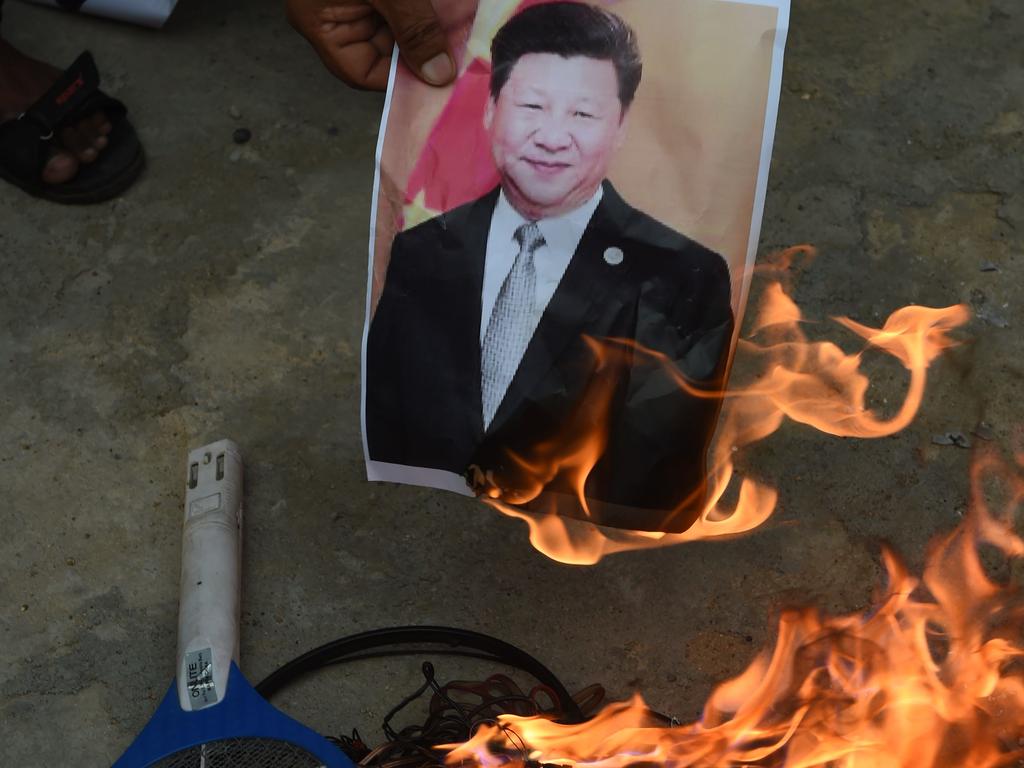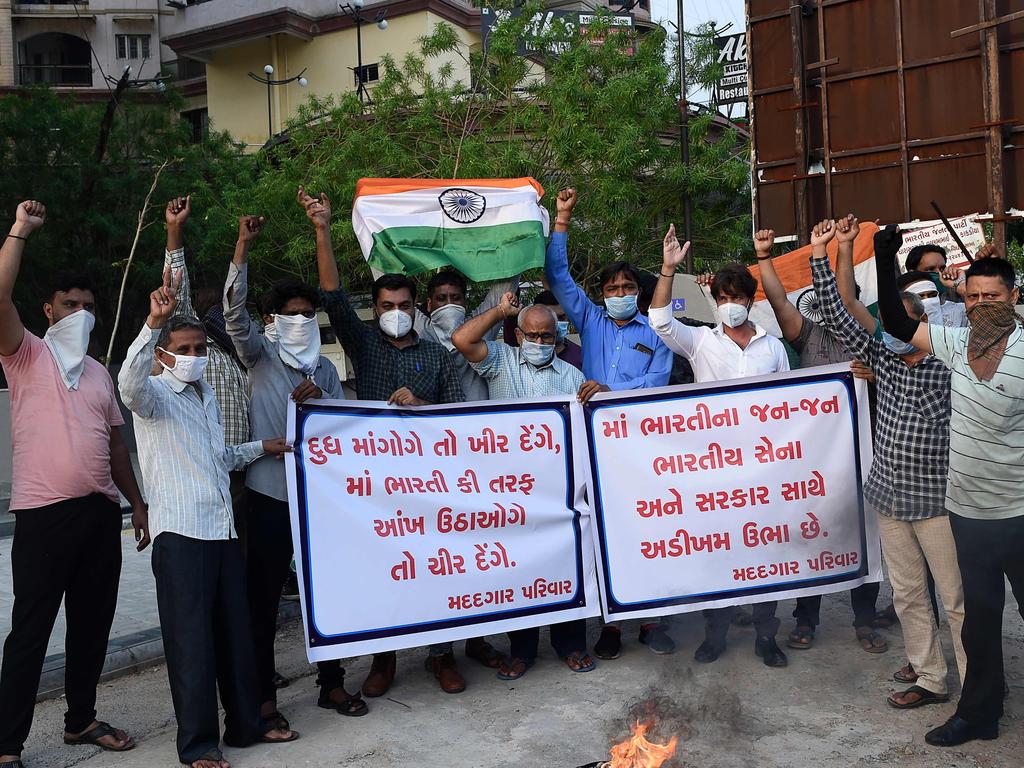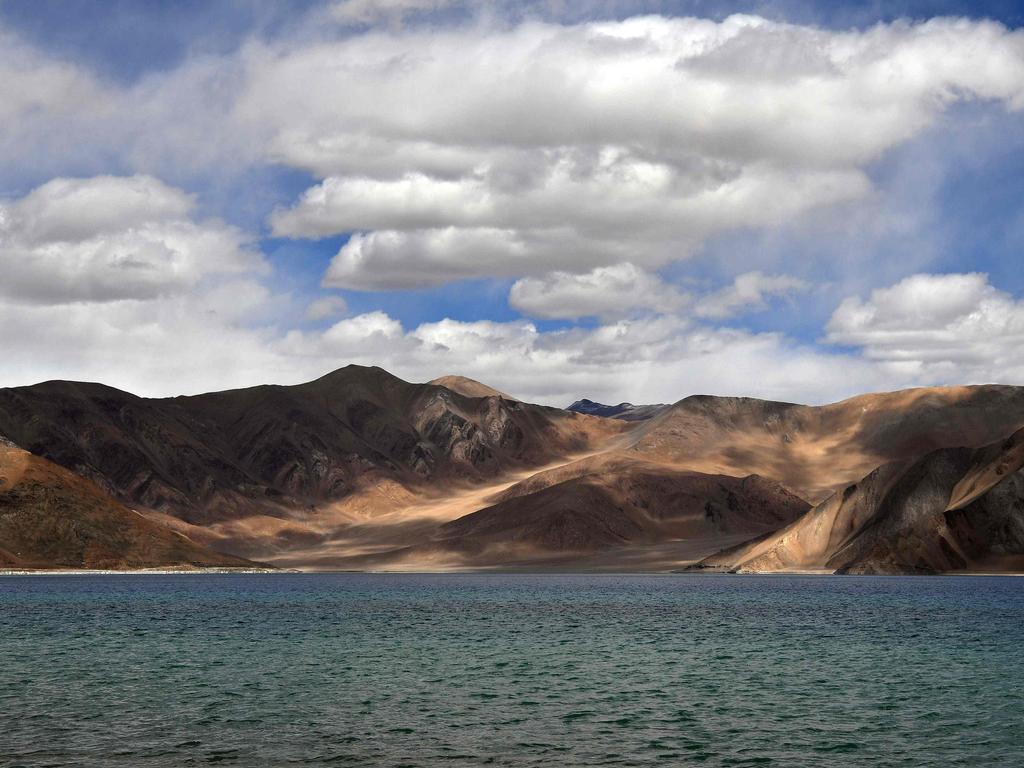China-India border dispute could ‘spiral out of control’ China warns as India confirms 20 soldiers killed
At least 20 Indian soldiers have been killed in a “violent face off” with Chinese forces as the nuclear armed neighbours inch closer to all-out conflict.
At least 20 Indian soldiers have been killed in a “violent face-off” with Chinese forces along the disputed Himalayan frontier in the deadliest clash between the nuclear-armed neighbours for more than four decades.
Both sides blamed each other for Monday’s clash in the precipitous, rocky terrain of the strategically important Galwan Valley, between China’s Tibet and India’s Ladakh region, which analysts described as “worrying”.
India had earlier put the toll at three dead. But in a statement later the army added that 17 more “who were critically injured in the line of duty at the stand-off location and exposed to sub-zero temperatures in the high altitude terrain have succumbed to their injuries, taking the total that were killed in action to 20”.
China has not confirmed its number of casualties, however the Times of India has quoted unnamed sources as claiming up to 20 Indian Army and 43 Chinese personnel were killed.
MORE: Is China more powerful than India?
On Tuesday the Global Times, China’s English language newspaper, that has been increasingly used by the Communist Party to promote its world view, said the “arrogance and recklessness” of India was the reason for the tension.
“In recent years, New Delhi has adopted a tough stance on border issues, which is mainly resulted from two misjudgements. It believes that China does not want to sour ties with India because of increasing strategic pressure from the US, therefore China lacks the will to hit back provocations from the Indian side,” it said.
“In addition, some Indian people mistakenly believe their country’s military is more powerful than China’s. These misperceptions affect the rationality of Indian opinion and add pressure to India’s China policy.”

The editorial claimed “the gap between China’s and India’s strength is clear.”
“China does not want to turn border issues with India into a confrontation. This is goodwill and restraint from China. But China is confident in the situation at the border. It does not and will not create conflicts, but it fears no conflicts either. This policy is supported by both morality and strength. We will not trade our bottom line with anyone.”
“The clash in the Galwan Valley this time has led to casualties on both sides, indicating China-India border tensions, amid constant frictions, may spiral out of control.”
It claimed China did not disclose its number of casualties in a bid to prevent the issue escalating.

But New Delhi’s foreign ministry spokesman Anurag Srivastava hit back, saying the clash arose from “an attempt by the Chinese side to unilaterally change the status quo” on the border.
An Indian army officer in the region told AFP there had been no shooting in the incident.
“It was violent hand-to-hand scuffles,” the officer said on condition of anonymity.
Beijing confirmed a clash took place and accused Indian soldiers of “attacking Chinese personnel”.
Indian troops “crossed the border line twice … provoking and attacking Chinese personnel, resulting in serious physical confrontation between border forces on the two sides,” China’s foreign ministry spokesman Zhao Lijian said Tuesday.
“We again solemnly request that India follows the relevant attitude and restrains its frontline troops,” he added.

SUPERPOWERS FACE OFF
India and China have long squabbled about their border but recent weeks have seen an escalation.
On May 9, several Indian and Chinese soldiers were injured in a clash involving fists and stone-throwing at Naku La in India’s Sikkim state, which borders Bhutan, Nepal and China.
Alice Wells, the top US State Department official for South Asia, likely irked Beijing last month when she said China was seeking to upset the regional balance and had to be “resisted”.
But the Chinese foreign ministry said only last week a “positive consensus” was reached following “effective communication” through diplomatic and military channels.
India’s foreign ministry too sounded conciliatory, saying the two sides would “continue the military and diplomatic engagements to resolve the situation and to ensure peace and tranquillity in the border areas”.
However, Indian sources and news reports suggested that Chinese troops remained in parts of the Galwan Valley and of the northern shore of the Pangong Tso lake that it occupied in recent weeks.
“We are at an extremely worrisome juncture in the relationship,” former Indian ambassador to China and foreign secretary Nirupama Menon Rao told AFP.
India and China have never even agreed on the length of their “Line of Actual Control” frontier, and each side uses different frontier proposals made by Britain to China in the 19th century to back their claims.
They fought a brief war in 1962 in which China took territory from India. Further deadly clashes followed in 1967, but the last shot fired in anger was in 1975.
In 2017 there was a 72-day showdown after Chinese forces moved into the disputed Doklam plateau on the China-India-Bhutan border.
After that India’s Prime Minister Narendra Modi and Chinese leader Xi Jinping appeared to ease tensions at two summits.
“If not handled correctly this can really escalate into something much bigger than we had initially imagined,” Harsh Pant from the Observer Research Foundation think-tank told AFP, calling China’s statement “worrying”.
“China, with its better infrastructure, with its better military capabilities, perhaps thinks that this is the time to push India, to see how far India will go,” Pant told AFP



